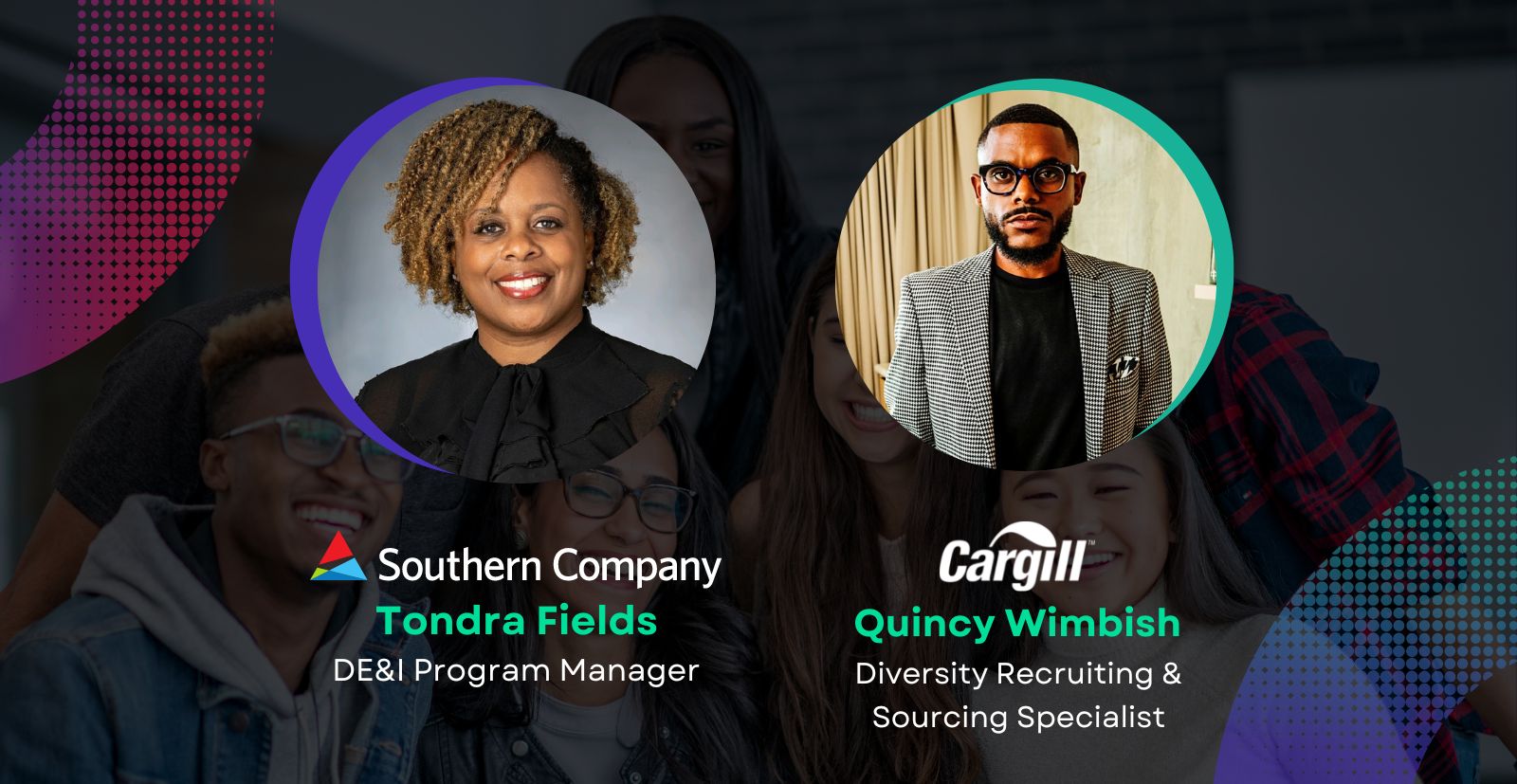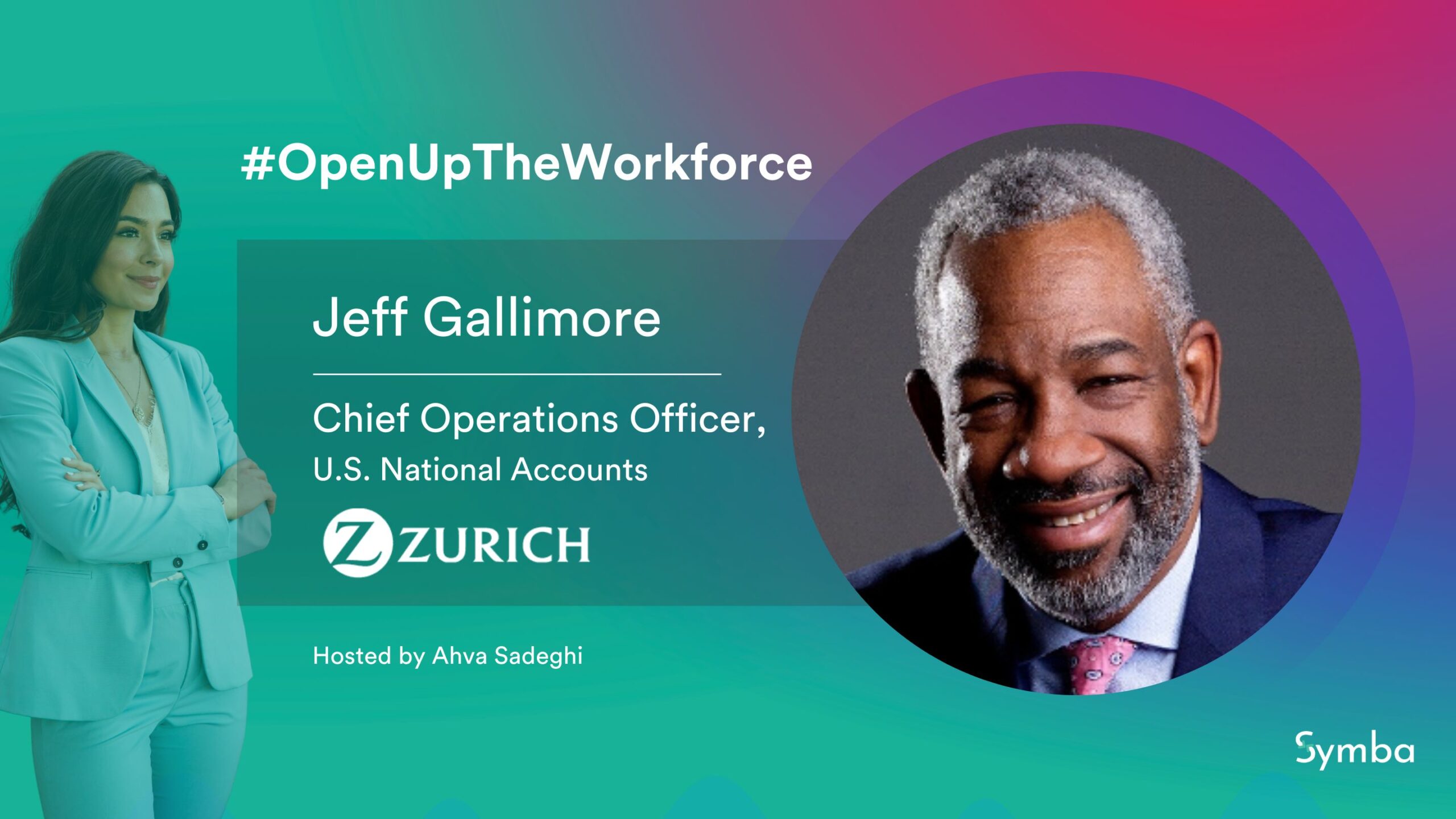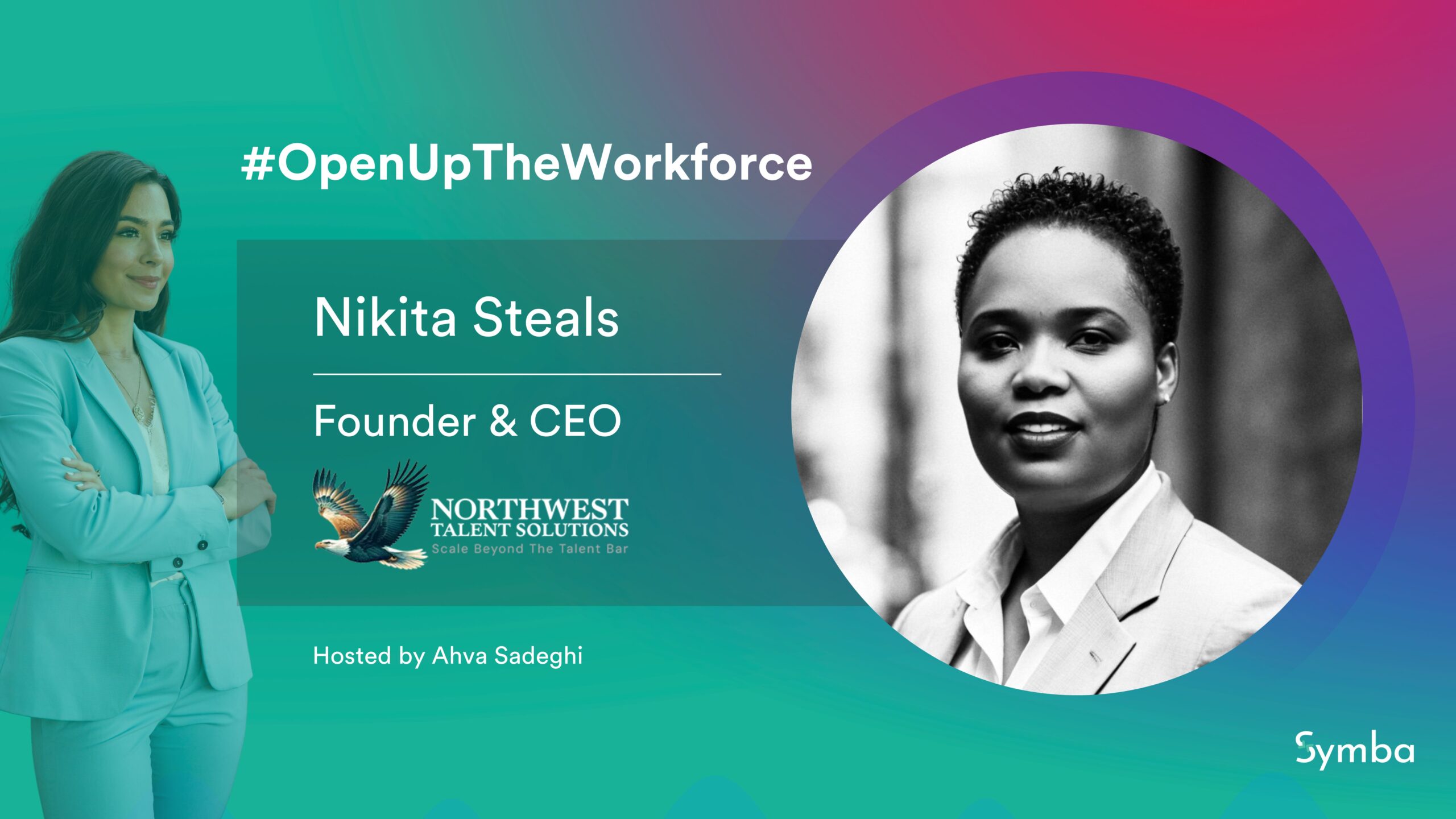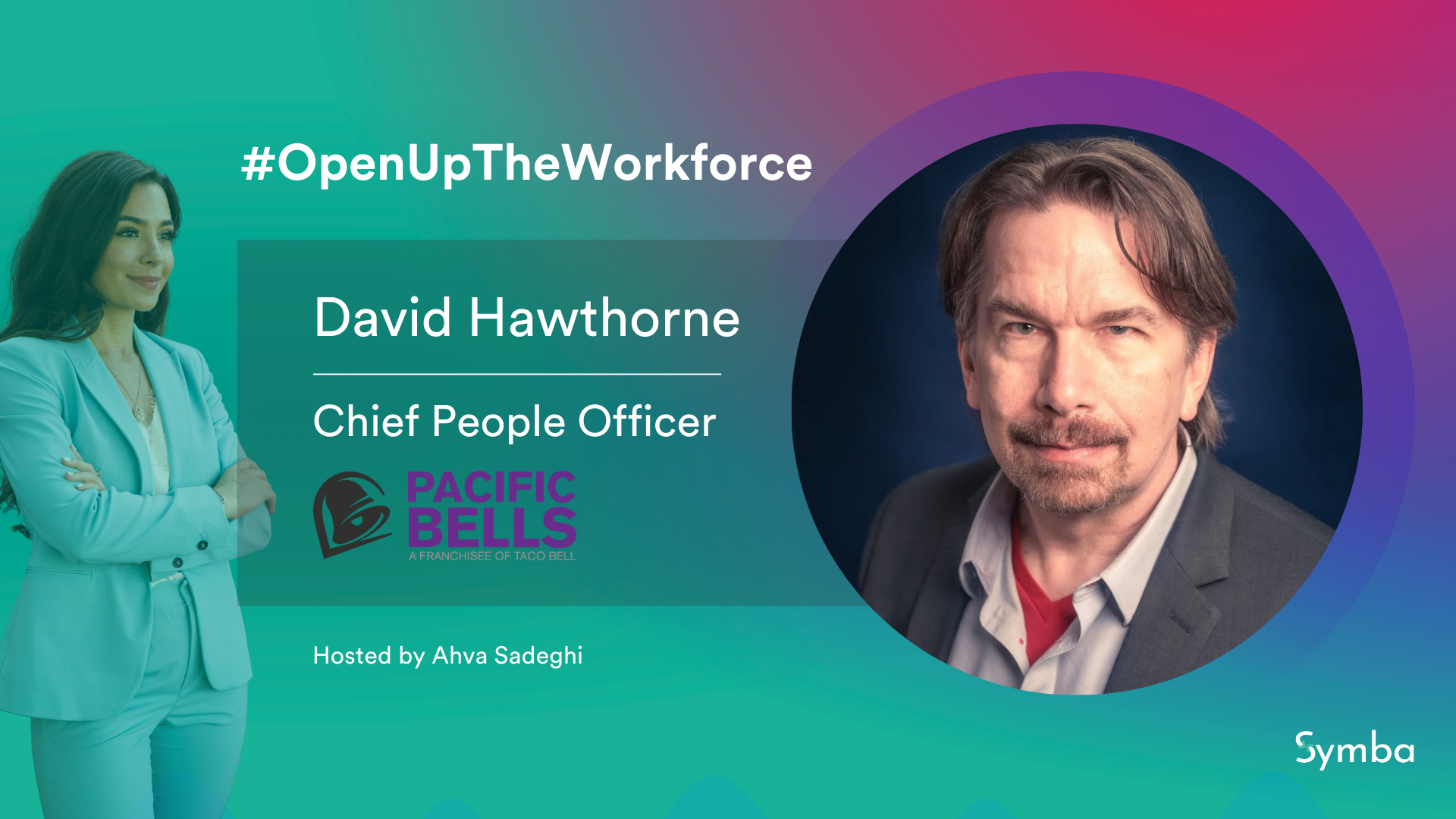The past few years have seen an unprecedented surge in the investment in diversity, equity, and inclusion (DEI) initiatives by companies worldwide. According to a recent report, the global spend on DEI is expected to double from an estimated $7.5B in 2020 to $15.4B in 2026. Despite these significant investments, many organizations are still struggling to build equitable and diverse workforces that foster inclusivity and belonging.
The solution to this problem is early career programs like internships and apprenticeships. When done with intention and consistency, these programs can serve as powerful diversity pipelines, helping organizations identify and nurture underrepresented talent. In our recent webinar titled "Building Successful Diversity Pipelines With Early Talent Programs," Quincy Wimbish, Diversity Recruiting and Sourcing Specialist at Cargill, and Tondra Fields, DE&I Program Manager at Southern Company, shared their insights on how to build effective and diverse early talent programs.
Set DEI Goals and Be Consistent
The first step to developing a diverse early talent program is to set DEI goals and be consistent in achieving them. Southern Company focuses on an equity framework and creating a sense of belonging. For them, early identification of talent is not exclusive but inclusive of the plan.
"Early talent identification is not an initiative, it's a business imperative. It is part of our goals, it is not shaped by it," Tondra said.
Quincy heads the THRIVE program for Cargill, which works to establish and foster relationships with DEI and university recruiting organizations. Their program is guided under three DEI goals: gender parity, advance and identify underrepresented talent by 20%, and address anti-black racism. To ensure the success of Cargill's THRIVE Program, they work cross-functionally and with leadership. The program was established through a partnership between the executive leadership, DEI, and talent acquisition teams, with each pillar working together to strategize and provide necessary support. By collaborating and utilizing the strengths of each function, the THRIVE Program can receive the resources and support necessary to achieve its DEI goals and foster a diverse and inclusive workforce.
Foster Effective Partnerships
To best serve HBCUs, HSIs, and other minority-serving institutions (MSIs), companies must recognize the importance of regular communication and feedback to identify additional opportunities for engagement and improvement. Southern Company emphasizes the importance of building active, consistent, and mutually beneficial relationships with these institutions. This includes engaging with campus leaders and staff, as well as having employees serve on campus boards and committees.
Cargill fosters these relationships by funding salaries for full-time Program Impact Directors (PIDs), who work at universities and other partner organizations to help manage their THRIVE program. These PIDs identify and provide professional development opportunities for scholars, collect feedback, and are Cargill’s eyes and ears on the ground. Through monthly meetings with individual PIDs and as a group, Cargill aims to develop meaningful and sustainable relationships with organizations that work with underserved talent.
Create a Sense of Belonging
Belonging is an essential component to DEI&B (you can’t forget the B) to ensure that your early talent feels included, valued, and engaged. Southern Company has an intern and co-op led organization called Students of Southern Company, which is given a budget and leadership opportunities. Additionally, assigning interns a peer or mentor, providing professional development opportunities, such as putting them in front of leadership, involvement in ERGs and culture councils/committees, and being consistent can foster a sense of belonging.
Cargill’s business resource groups (BRGs) are aligned to talent acquisition and retention efforts. The early talent team relies on these BRGs to support their interns and co-ops through mentorship and onboarding. They also leverage BRG members’ testimonials and personal journeys to brand jobs. Needless to say, don’t use the one-size-fits-all model, because it doesn't. Ultimately, these strategies for belonging help early talent feel valued, heard, and included, leading to their personal and professional growth and the overall success of the organization.
Have a Plan for Overcoming Challenges
Despite the many benefits of diverse early talent programs, there are still challenges to overcome. One of the most significant challenges Southern Company faced was the difficulty of changing their organizational culture. Some employees viewed change as a loss rather than a gain. To overcome this challenge, Southern Company leveraged organizational training to educate employees on how the changes would benefit everyone, and emphasized that doing things the same way would not enable them to take energy into the future.
Cargill solves challenges by having a long-term approach and communicating that intention. Quincy shared he maintains a high level of consistency and communication, uses regular check-ins and surveys of all team members, and tries to be flexible with the THRIVE program.
“Especially when a program is relatively new, there are challenges that arise that you may not necessarily account for, and sometimes those challenges can seem overwhelming. But that doesn’t mean that it is the end of what we are looking to do and what we are looking to build,” Quincy said.
Make Sure your Program is Measurable
In order for DEI programs to be effective, it is important to track metrics to identify areas of strength and opportunities for improvement. Additionally, holding people accountable can help ensure that DEI goals are not just lip service, but actually incorporated into the organization's culture. In fact, Southern Company ties DEI goals to compensation. When it comes to measuring success specifically for early talent, conversion rate - how many interns and co-ops convert to full-time employment - has been a major success factor for Southern Company. They also track promotion rates and turnover to determine long-term impact.
Cargill uses source codes to track engagement and brand awareness. These source codes help the Cargill team understand how their diverse early talent are hearing about Cargill job opportunities and which recruitment channels are the most effective. By tracking these metrics, organizations can not only measure the effectiveness of their DEI programs but also make data-driven decisions to continuously improve and promote a more inclusive workplace.
Start With What You Have
Starting an early talent program doesn't have to be a daunting task, even for small organizations with limited resources. The key is to begin with what you have, and set clear intentions to drive your program forward. If financial resources are scarce, it's important to spend time instead. There may be employees already within your organization who are eager to mentor or speak on panels to diverse candidates. Additionally, take a look at existing partners and seek out opportunities that might present themselves as free. By meeting students where they are, whether it's in person or through virtual efforts, organizations can provide long-lasting success and help close gaps in the pipeline. Virtual opportunities, in particular, tend to be free and can be a great way to connect with a diverse pool of candidates.
Final Thoughts
Creating a successful early talent program requires a community effort. Programs need to meet people where they are individually. Additionally, it's crucial to set DEI goals and be consistent in achieving them, measure success consistently, create a sense of belonging, and view challenges as opportunities. By doing so, organizations can build equitable and diverse workforces that foster inclusivity and belonging. You can catch these tips in the full webinar here.
Are you interested in how Symba can support your diversity pipeline programs? Use our platform to track metrics, spotlight DEI stories and resources, and promote inclusion and belonging. Sign up for a demo today!





